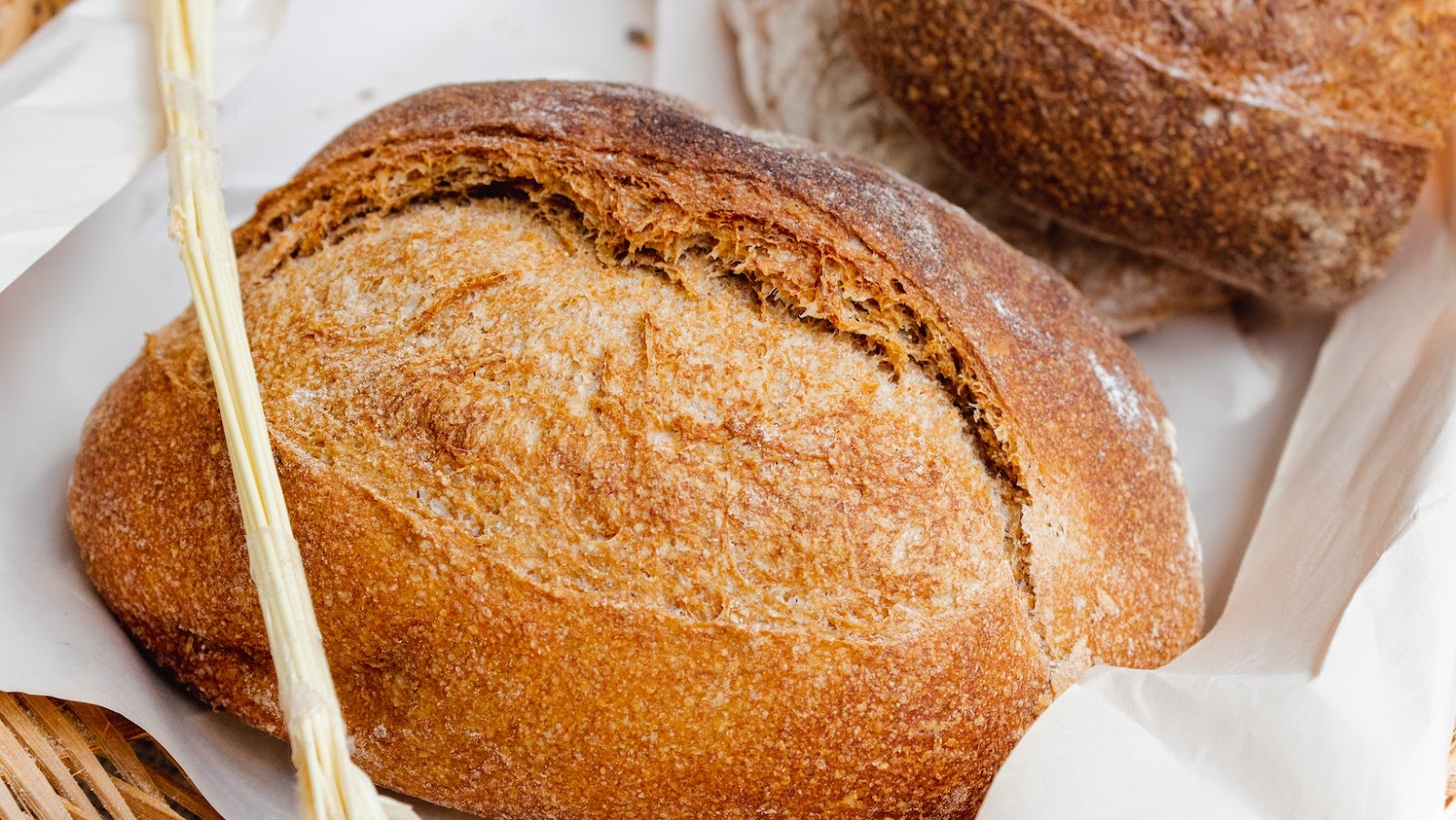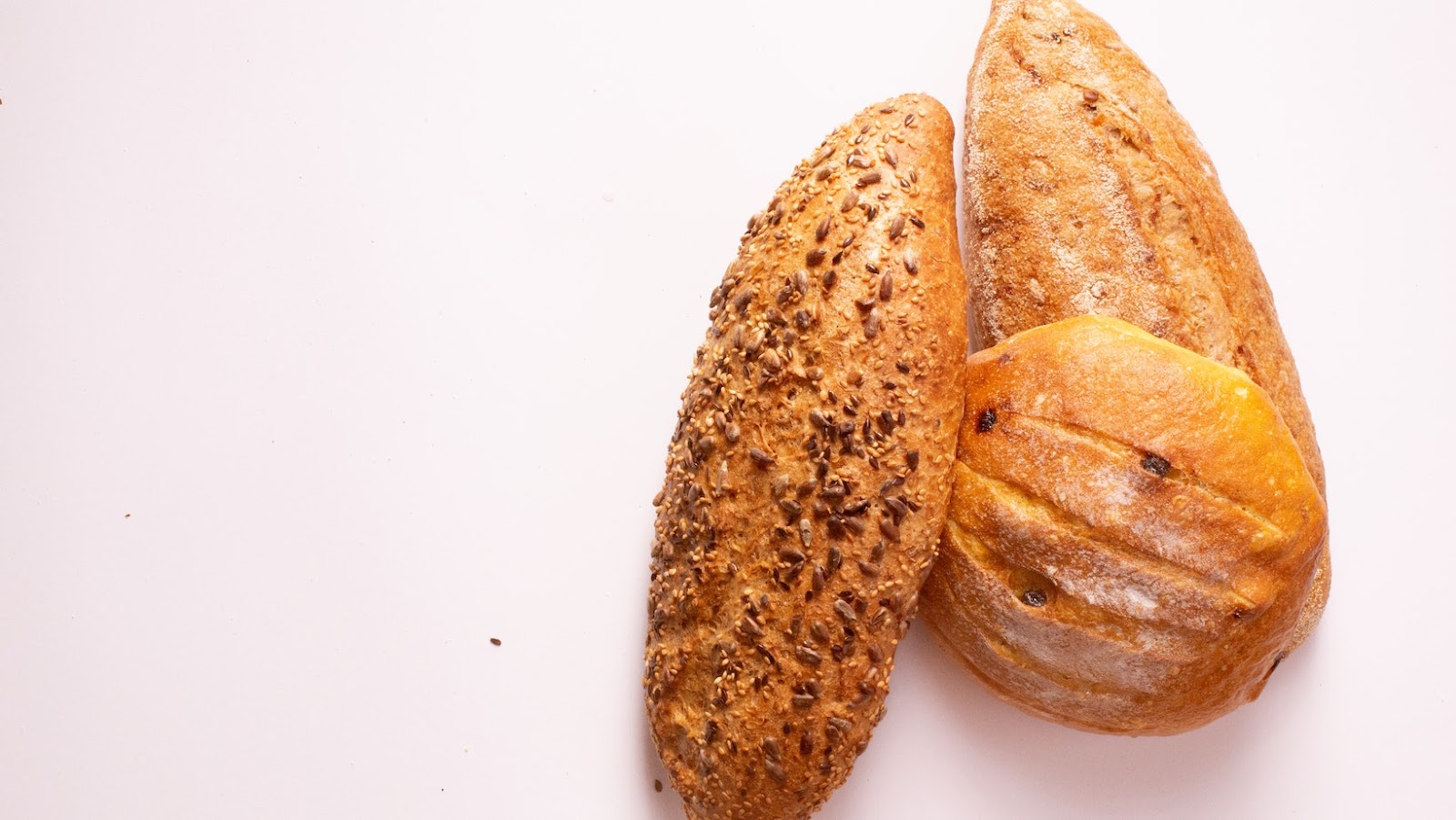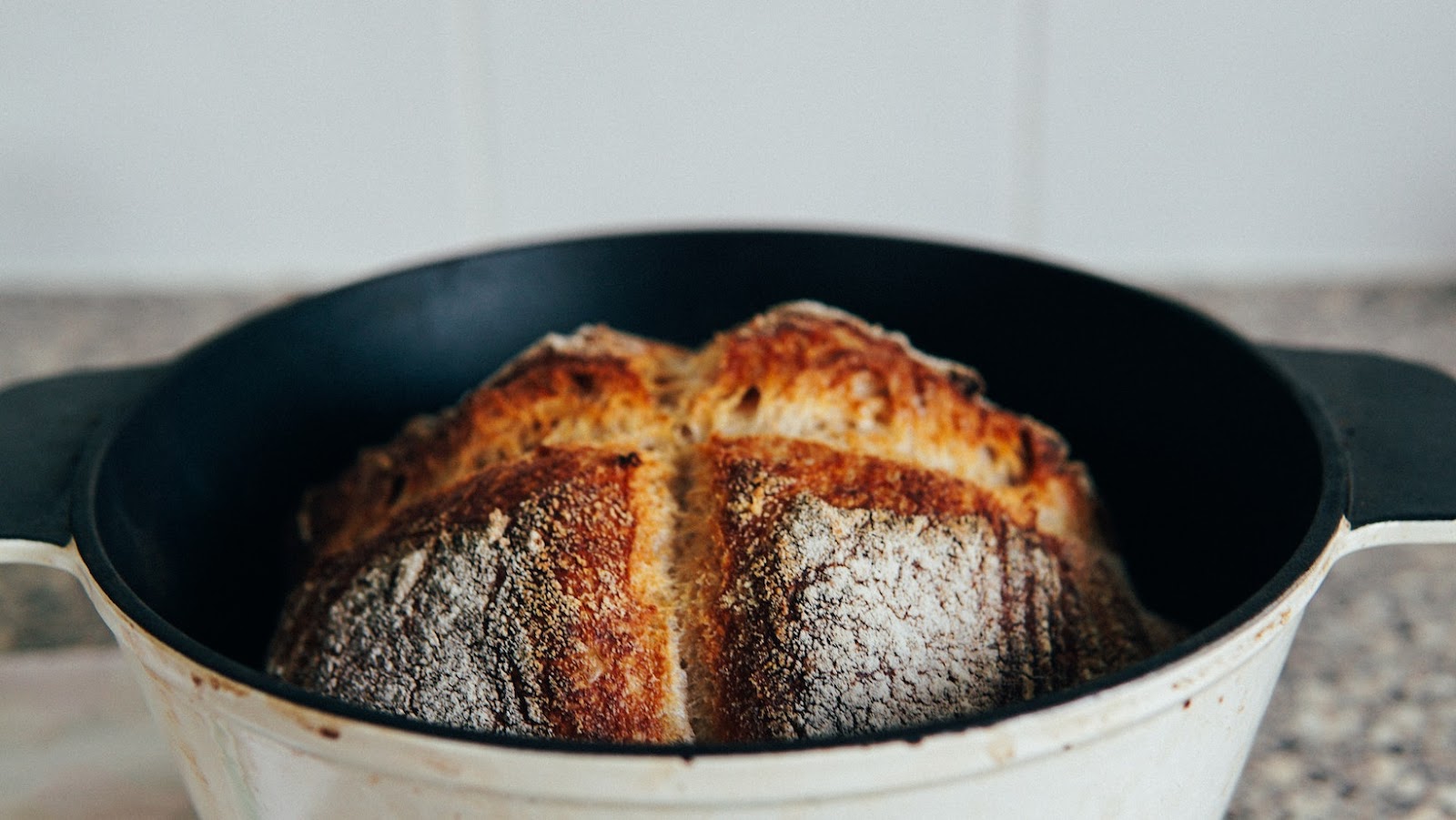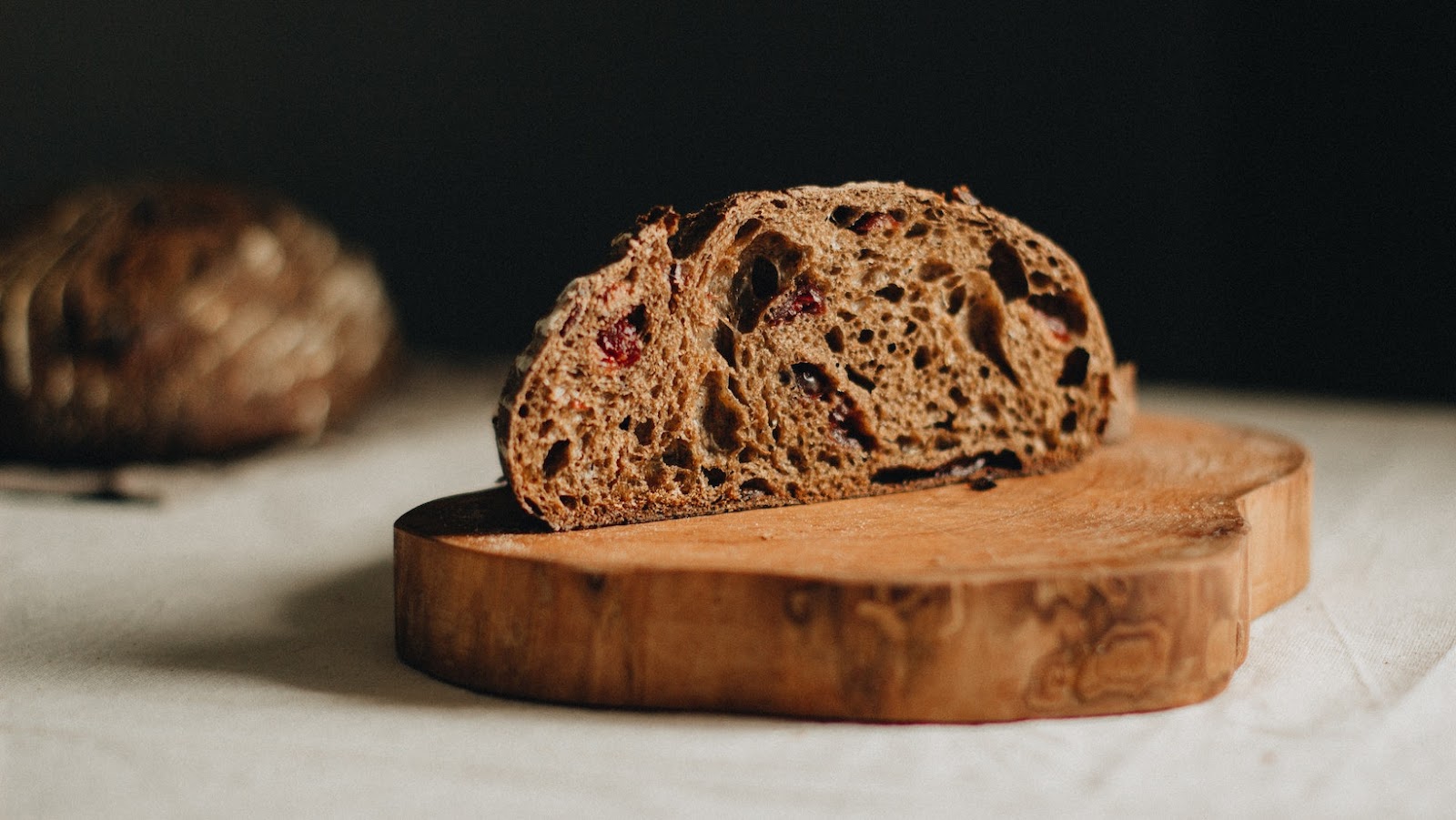How to Store Sourdough Bread
Sourdough bread is a tasty treat for many. But, how do you store it? To keep your sourdough fresh, here’s what to do:
- Use a paper bag or breadbox – The bread needs air, so avoid an airtight container as it could make it stale.
- Don’t put it in the fridge – Sourdough doesn’t like the cold, so it can dry out quickly.
- Freeze for longer storage – If not eaten within three days, freezing it is best. Wrap tightly in plastic wrap to prevent drying.
- Reheat before eating – To enjoy the freshness again, heat in an oven at 350°F (175°C) for five minutes.
Different types of sourdough may last shorter or longer, depending on ingredients, moisture, production and temperature. To further extend its shelf life, wrap a slice in damp paper towels before putting it in a plastic bag. This helps keep mold away and prevents drying out.
By following these tips, you’ll get the most from your sourdough and reduce loaves being thrown away. Our bread buddy needs a good environment for the best shelf life!
Factors Affecting The Shelf Life of Sourdough Bread
Paragraph 1 – Sourness aside, what are the factors that can affect how long sourdough bread can be stored?
Paragraph 2 –
Factors Affecting Shelf Life of Sourdough Bread | Description |
Type of Flour Used | Different flour types affect moisture retention, and thus shelf life. |
Baking Temperature | Over or under baked bread can affect moisture retention, and thus shelf life. |
Hydration of Dough | The amount of water used in the dough mixture affects how long bread can be stored. |
Storage Conditions | Proper storage conditions can drastically increase the shelf life of sourdough bread. |
Paragraph 3 – While the type of flour, baking temperature, hydration of dough, and storage conditions are important considerations in prolonging the shelf life of sourdough bread, it’s also worth highlighting that the age of the starter used can also play a role. A well-established and maintained starter can produce more resilient and long-lasting bread.
Paragraph 4 – Don’t miss out on perfectly good bread simply because it wasn’t stored properly! Ensure your sourdough bread remains fresh for longer by taking into account the different factors that can affect its shelf life. Don’t worry about the type of flour, as long as your sourdough bread lasts longer than a Kardashian marriage.

Type of Flour Used in The Bread
Flour has a major effect on the lifespan of sourdough bread. A chart named ‘Effect of Flour Type on Sourdough Bread’ with columns like Flour type, Texture, Flavor Profile, and Shelf Life can assist in understanding the importance of flour.
Wheat flour is widely used in sourdough, but other flours such as spelt or rye can make it denser and give it a unique flavor. However, these types of flour do not have a long shelf life compared to traditional wheat flour.
Picking the right flour for your sourdough recipe is essential to determine the lifespan of your bread. Make sure you store it properly and consume it quickly to avoid wasting it.
Pay attention to the kind of flour you use in your recipe to enjoy fresh sourdough bread. Choose it wisely and relish every bite before the great taste fades away! The hydration level in the dough is like a Tinder profile – too dry and you’ll be swiped left, too wet and you’ll be unmatched from the recipe.
The following chart illustrates the Effect of Flour Type on Sourdough Bread:
Flour Type | Texture | Flavor Profile | Shelf Life |
Wheat Flour | Light | Traditional | Long |
Spelt Flour | Dense | Nutty | Short |
Rye Flour | Dense | Earty, Tangy | Short |
Level of Hydration in The Dough
Hydration levels in dough-making are essential for the shelf life of sourdough bread. The level of water used versus the amount of flour determines the hydration level.
A table shows the different levels and their effect on shelf life:
Hydration Level | Shelf Life |
60% | 3-4 days |
70% | 4-5 days |
80% | 5-6 days |
90% | 6+ days |
As the hydration rises, the shelf life also increases. But, overdoing it can harm the texture, taste and quality of the bread.
To get the best results, it’s important to measure precisely when making dough. Factors such as temperature, storage and packaging also play a role in its longevity. Correct storage keeps it fresh longer. Wrapping it in paper instead of plastic further helps maintain the optimum moisture content, and thus extends the shelf life.
No one wants their sourdough starter to last longer than a Game of Thrones episode!
Fermentation Time And Temperature
For the longest shelf life of sourdough bread, the fermentation time and temperature are critical. They control the taste, texture, and aroma.
Look at this table to get the optimal range:
Fermentation Time | Temperature Range |
8-12 hours | 75°F – 82°F |
Over 12 hours | 68°F – 75°F |
Longer fermentation times and cooler temperatures lead to increased lactic acid bacteria and yeast, resulting in an extended shelf life. On the other hand, fermenting at higher temperatures can ruin the taste, aroma, and texture.
Scientific studies have shown that sourdough bread with longer fermentation times and cooler temperatures has a longer shelf life. (Source: Journal of Agricultural and Food Chemistry)
To keep your sourdough from becoming moldy, avoid heat and humidity.
Storage Location And Conditions
For best shelf-life of sourdough, it’s important to know where and how to store it. The ‘Environment and Positioning’ can extend its life! Check out this table for more detailed info:
Storage Location | Temperature Range | Recommended Duration |
At room temp | 18-24°C | 2-4 days |
In the fridge | 0-10°C | 5-7 days |
In the freezer | -18°C or lower | Up to 3 months |
Always keep sourdough in an airtight container. Commercial bread bags are a no-go as they don’t allow proper ventilation, leading to moisture buildup. Wrap the bread in cling film or foil instead.
Throughout history, different cultures found ways to make bread last longer. Medieval Europeans made bread once-a-week and stored it dry and hard. Each day they’d break off a piece and bake it again until crispy. These hardtacks were so tough soldiers could carry them on journeys without fear of spoilage.
It’s a good thing sourdough doesn’t expire! After all, it’s too delicious to last that long.

How Long is Sourdough Bread Good For
Sourdough bread is a unique type of bread that is highly appreciated for its tangy taste and chewy texture. However, you may wonder how long sourdough bread can stay fresh and tasty. To ensure the best quality, store sourdough bread appropriately.
When stored at room temperature, sourdough bread can last for up to five days after baking. However, if stored in the fridge, it can last for up to two weeks. Freezing the bread can extend its shelf life up to six months.
To preserve the taste and texture of sourdough bread, it’s crucial to keep it in airtight containers or plastic bags. Wrapping the bread in a cloth or paper is not recommended, as it can cause moisture buildup and mold.
If you want to reheat the bread, do so using an oven or toaster, as microwaving can make it dry and chewy. To make the bread tastier, brush it with a little water before heating.
By following these simple storage methods, you can ensure that your sourdough bread remains fresh and tasty for longer.
Room temperature shelf life for sourdough bread? More like ‘room temperature expiration’.
Shelf Life of Sourdough Bread at Room Temperature
Sourdough bread has great shelf life potential. It can last for days, weeks, or even months – depending on the storage technique and environmental conditions. Here are some details:
- Room temp: 3-4 days.
- Fridge: 1 week to 10 days.
- Freezer: 6 months to a year.
This type of bread is special because it’s able to last longer than others due to its fermenting process. So, you can still eat it after a few days past its shelf life date.
Pro Tip: To make it last longer, store in an airtight container or wrap it in plastic or foil. Refrigerating it isn’t the best idea, because it won’t enhance the taste.
Refrigerating Sourdough Bread
Store sourdough bread wrapped in cling film or airtight containers at room temperature, up to three days, to maintain freshness and quality.
If freezing, it’s like cryogenically preserving a delicious piece of history. To defrost, remove from freezer and let thaw at room temperature for a few hours before heating. Don’t refreeze thawed bread, as this will affect texture and taste.
For refrigerating, put a piece of paper towel inside the container or cling film to prevent moisture buildup.
Freezing Sourdough Bread
Freezing Sourdough Bread – A 5 Step Guide!
- Cool your sourdough loaf completely before freezing.
- Wrap it tightly in plastic or foil – no gaps!
- Put it in an airtight container or bag.
- Label and place in the freezer, level and undamaged.
- Two hours before serving, take out of the freezer and let defrost at room temperature, still wrapped.
Remember: freezing will make the crust soft. To crisp it up, preheat your oven to 375F (190°C) and put the loaf in for 5 minutes after defrosting. Check frozen sourdough regularly as it has a short lifespan if not stored well. With these tips, you can join millions preserving their food – never miss out on freshness again!
Tips For Extending The Shelf Life of Sourdough Bread
Extending shelf life of sourdough bread can be tricky. Here are some tips:
- Store it right: Keep it in a paper or cloth bag, away from direct sunlight.
- Freeze it: Slice it, put it in an airtight container, then defrost in the microwave or oven.
- Make use of its acidity: Sourdough bread has natural acidity that preserves freshness. Avoid acidic condiments like vinegar or tomatoes when eating.
- Bake smaller loaves: Divide dough into smaller portions before baking. This will reduce waste and keep your bread fresh longer.
Freshness depends on how it was made, where it was baked, and when it was baked. Consume sourdough bread within 3 days of baking. Properly stored, it lasts up to 5 days. Store properly for a yummy experience every time! If sourdough bread is a weapon, it’s bad.
Signs That Sourdough Bread Has Gone Bad
Paragraph 1: Sourdough bread, like all other perishables, eventually goes bad. To identify if the bread has gone bad, one must observe and recognize certain signs.
Paragraph 2: Signs that sourdough bread has gone bad can include mold growth, a sour smell, and a hardened texture.
- Mold growth can be observed as fuzziness on the bread’s surface, and it is an indication that the bread is no longer safe to eat.
- A sour smell could mean that there is mold present, or it could be that the bread has gone stale.
- A hard texture is a sign that the bread has lost moisture. If this occurs before the bread’s expiration date, it is best to freeze it to ensure it stays fresh.
Paragraph 3: As sourdough bread ages, it may develop a sour taste. This may not necessarily indicate that the bread is bad, but rather, it is a result of the fermentation process. However, if accompanied by any of the above signs, the bread has gone bad and should be discarded.
Paragraph 4: Pro tip: To prolong the shelf life of sourdough bread, always store it in an airtight container or plastic bag to prevent it from drying out. “When it doubt, don’t sprout” – visual mold and odor are not your friends when it comes to sourdough storage.

Visual Cues
Observe Bread to Evaluate Quality.
To check the quality of sourdough bread, look for visible signs.
COLUMN 1: Color – Check for any molds, spots, or unusual colors. If too yellowish or intense brown, it could be stale. |
COLUMN 2: Smell – Any bad odors, like vinegar, booze, or acetone, mean something is wrong with the dough. |
COLUMN 3: Texture – Hard outside, fragile, very stiff, or moist inside are bad signs. |
Remember when you bought or baked the bread. Store in a paper bag at room temperature. If it smells and tastes bad, it’s time to say goodbye.
Smell And Taste Cues
Sourdough bread gone bad? Look out for these signs:
- a foul smell such as mustiness or mould,
- a bitter, sour, or rancid taste,
- visible mould growth,
- and a stale, dry texture.
Keep in mind that the fermentation process can give it a tangy aroma and acidic taste, not signifying spoilage. To avoid food poisoning, discard the entire loaf! To keep it fresh, store sourdough in an airtight container, in a cool place away from sunlight. Cut only what you need and freeze the rest within two days. By following these tips, you’ll enjoy safe-to-eat sourdough bread every time! Treat it right – or suffer the consequences.
Conclusion: Maintaining The Freshness nd Quality of Sourdough Bread
It’s crucial to store sourdough correctly to preserve its freshness and quality. Wrap it with parchment paper or place it in a paper bag to keep the crustiness and prevent moisture buildup. Keep sourdough at room temperature for up to six days. Refrigerators are a no-no, as they could dry out the bread. Instead, store it in a cool, dry, dark place. Slice bread only when you plan to serve it. For leftovers, you can freeze them for up to three months. However, don’t refreeze previously frozen slices.
Sourdough has been around since Ancient Egypt! Some claim even Cleopatra was a fan. Its fermentation technique has evolved over time into the modern-day version we enjoy today.





